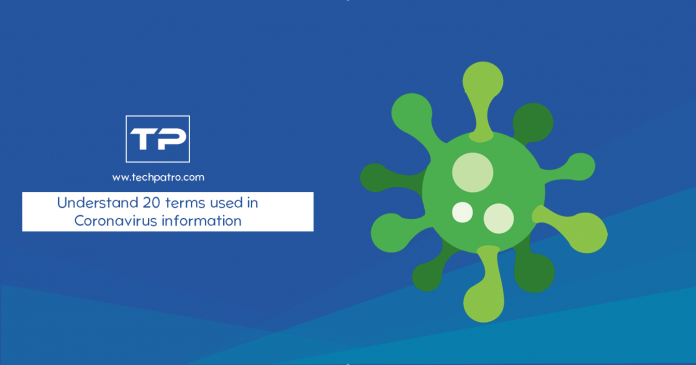In the midst of a real bombardment of information, it is natural to not want to have contact with things related to the coronavirus pandemic. However, for those moments when you decide to catch up, it is important to be sure that you understand everything that is passed on. There appear some difficulties.
Epidemic, pandemic, quarantine, lockdown, social isolation, and even more specific terms such as Sars-Cov-2, COVID-19, surge spikes, or contagion curve flattening can cause a real knot in anyone’s head.
Also Read: COVID-19: Quarantine, Isolation, Social Distancing, and Lockdown?
Did you get confused just reading that list of terms? It’s not a problem. Check out the “minidictionary” we’ve prepared for you, and the next time you’re going to read a story or watch some news, make sure you understand exactly what’s going on.
Coronavirus Glossary
1 – Coronavirus
Family of viruses that cause respiratory infections. The first human coronaviruses were first isolated in 1937. In 1965, he was baptized by the profile in microscopy, looking like a crown.
2 – Sars-Cov-2
Name of the new coronavirus, responsible for the disease that has spread throughout the world.
3 – COVID-19
Respiratory disease caused by Sars-Cov-2.
4 – The incubation period
The time between the time of contagion and the first symptoms. In this interval, the infected is already able to infect other people, even without presenting any symptoms.
5 – Asymptomatic patients
People who, even infected, have no symptoms. Still, they can transmit the disease to other individuals.
6 – Risk group
A group formed by those who are at great risk of being infected or have complications if the contagion occurs.
7 – Suspected cases
Patients who present symptoms but have not yet had the diagnosis confirmed by means of an examination.
8 – Confirmed cases
People who took the test and tested positive for the disease.
9 – Epidemic
Unusual increase in cases of a particular disease affecting a region or country. For example, in the case of the new coronavirus, when it was restricted to China,it was, until then, an epidemic.
10 – Pandemic
The proliferation of the disease around the world. Occurs after three phases: imported cases, when people return to their country of origin after being contaminated in affected locations; local transmission, when persons who have not travelled contract the disease of travellers, it is possible to identify the source of the contamination and isolate the cases; community transmission, when there is no longer control of the origin of the infection.
11 – Contagion curve
A number of new people infected in a given period of time.
12 – Peak contagion
Maximum moment of simultaneous contamination, presenting stability and subsequent setback, with the decrease of new cases from there.
13 – Flattening of the contagion curve
Measures are taken to slow down the speed of contamination and prevent, for example, health systems from being burdened with high patient demand.
14 – Isolation or social distancing
Avoid, voluntarily or not, leaving home without need and stay away from physical social interactions to contain the spread of the disease.
15 – Quarantine
Administrative act issued by authorities and competent entities suspending public activities, such as the determination of the closing of trade, schools and concert halls, aiming to prevent agglomerations and the like.
16th – Lockdown
Stricter quarantine regime, in which people are recommended or even forced to stay at home – including those linked to essential services.
17 – State of emergency
It warns about the ire of damage to health or public services, which allows extraordinary decisions to be made to avoid them.
18 – State of calamity
Decree after the situation installed, allowing even more drastic measures, such as more investments not foreseen before the problem in question.
19 – Lethality rate
An average number of people who died after infection.
20 – The mortality rate
The average risk of death based on the number of people who died compared to the total number of infected.
If you have had any questions yet, be sure to continue following our subjects. We do our best to provide clear and quality information. Do like and share our page and post.













